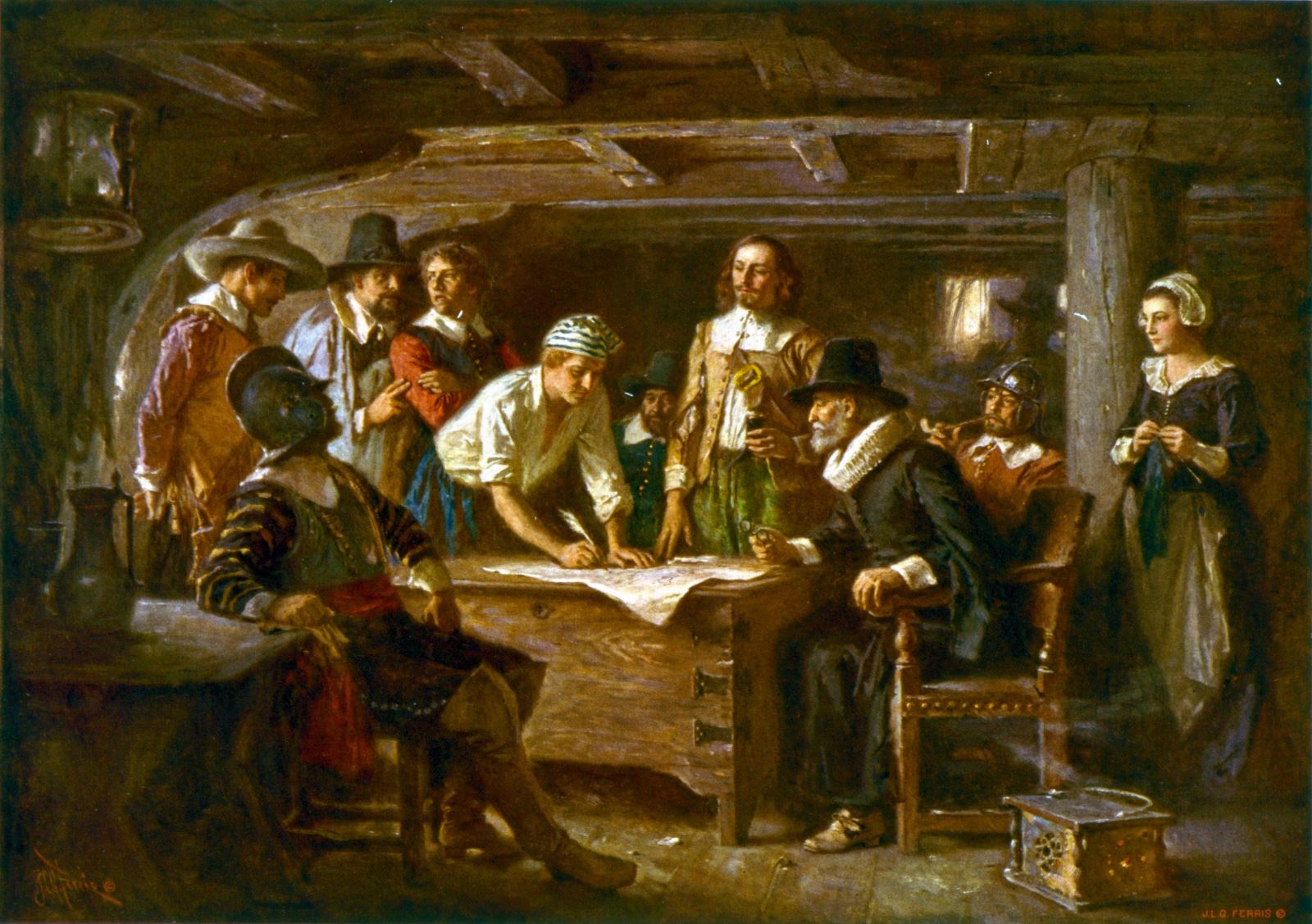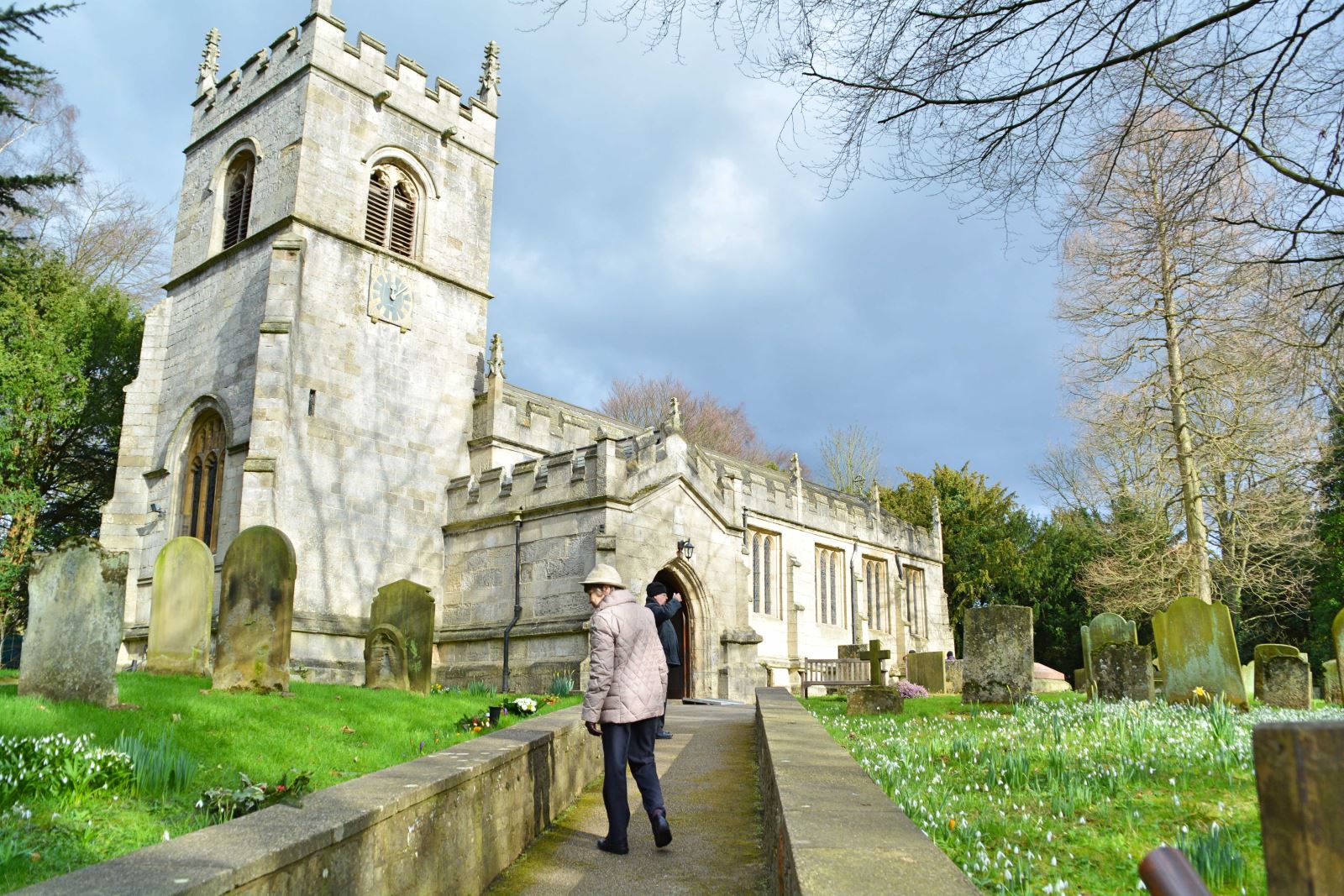
Most of us have heard about the Mayflower and its epic journey to the New World which took place in 1620, but not as many can say exactly what the Mayflower Pilgrims’ connection to Nottinghamshire is and how it all began.
As part of this year’s English Tourism Week we’d like to bring the history to life and help you walk in the footsteps of the Mayflower Pilgrims, who are considered the founding fathers and mothers of the modern-day America. While we may not be able to welcome you to our fair county for a while longer, we're still excited to tell you all about the things that make Nottingam and Nottinghamshire such a great place to visit, and the things that make us unique.
So, what happened and why did the Mayflower Pilgrims leave England?
Here in Nottinghamshire the rebellious spirit seems to run in our DNA. We don’t like when someone enforces laws with an iron fist or takes away our freedom. This certainly was one of the main reasons why the Mayflower Pilgrims decided that they couldn’t stay on English soil any longer and had to seek a safe haven somewhere else.
It all started in the early to mid-15th century, when England was going through religious uncertainty and major changes. Henry VIII initiated the historic act of breaking away from Rome and the Roman Catholic Church and a series of acts of Parliament were passed between 1532 and 1534 - among them the 1534 Act of Supremacy, which declared that Henry VIII was to become head of the new Church in England. It’s hard to believe that such a momentous religious shift started from Henry VIII failing to obtain a divorce from the Pope. After the 1534 Act of Supremacy was passed, Henry VIII granted himself a divorce from his first wife Catherine of Aragon and the new Church of England was formed. Henry was now not only the head of state but the head of church as well. Henry’s actions caused the Pope to expel him, and the reformation of the English churches had begun.
Years passed and dissatisfaction with the new Church of England grew among both the clergy and followers. Many believed that Henry’s new church was still too much like the Roman Catholic Church and wanted more changes. The Puritans wanted to purify the new church of all old practices. The Separatists, on the other hand, believed that it was impossible to change Roman Catholic Church for the better and therefore the only way for the new church was to break away completely from all old practices and doctrine. They hoped that this would end the widely spread corruption among the clergy as well. While other Puritan groups maintained some of their links with the Church of England, the Separatists followed their own style of worship, which was not approved by the king and therefore made them the enemies of the Crown.
In 1604 James I and his Bishops met in conference at Hampton Court Palace and a new list of rules approved by the King was drawn up. All clergy were then obliged to conform to these rules, but around 100 Anglican clergy refused. They were stripped of their positions and lost their living within the already established by then Church of England. Among these clergymen were Richard Clifton, John Robinson and John Smyth. Along with William Bradford and William Brewster, they were the principle players in the story of the Mayflower Pilgrims and the great escape on the Mayflower to the New World.

Babworth Church, photo credit: Credit Sally Outram
How do I walk in the footsteps of the Mayflower Pilgrims?
Nottinghamshire is located in the heart of the Mayflower Country, which includes two other English counties - Lincolnshire and South Yorkshire.
Some of the main people behind the Mayflower journey originated in Nottinghamshire. The future leaders of the Plymouth Colony and signatories of the Mayflower Compact, William Brewster and William Bradford lived, worked and worshipped in the villages and towns of Nottinghamshire.
Discover the roots of Mayflower Pilgrims by starting your journey in the town of Retford. Visit the Bassetlaw local history museum, and the Retford Hub which is the home of the Mayflower Pilgrim Visitor Centre. The Centre has children’s trails, quizzes, dressing-up and more. Tours and talks are available, and groups are welcome by appointment.
Driving onwards to the Pilgrim towns and villages you will discover the Babworth Church which is closely connected with the origins of religious separatism. This is where Richard Clifton was a minister from 1586 until 1605 and where items, including a silver chalice and Geneva bible with annotations from 1603 have been found.
-min.jpg)
St. Wilfrid's Church, Scrooby
Next stop on your Mayflower journey is the St. Wilfrid’s Church in Scrooby. It is likely that William Brewster was baptised and married there. Visitors can sit in the original wooden pews. Brewster who was one of the leaders of the New World had long been attracted by Separatism and was fined for nonattendance at St. Wilfrid's Church. William Brewster lived in the nearby Scrooby Manor where the Scrooby Separatist congregation met in secret. It’s now a private property, and unfortunately is not accessible to the public, but if you decide to go on a private tour with the Mayflower Maid (one of the local tour guides) on a Mayflower Pilgrim Tour, you will be allowed to access its grounds. For those of you visiting without a tour guide there is a viewpoint on Station Road. Please do not access the grounds of Scrooby Manor without a guide.
After your visit to Scrooby, head to St. Helena’s Church located in the village of Austerfield. William Bradford, the second Governor of the Plymouth Colony, was born here and baptised in St Helena’s Church in the font which can still be seen today. Austerfield Study Centre is adjacent to the church.
Your final stop on this route is the Gainsborough Old Hall. A fine example of a large timber framed medieval manor house, the Hall was home to the Hickman family, William Hickman and his mother Rose, who were sympathetic to the Separatist movement and allowed regular secret meetings to be held here. Both William and Rose were Puritans and were unhappy within the Church of England. For them the Church of England was still too Catholic in practice and as Puritans they wished to reform the church from within. The Hall was a safe haven for many famous Separatists throughout the years. If you’re visiting the Gainsborough Old Hall, stop by the nearby All Saints Church. John Smyth, who was a minister and a defender of the principle of religious liberty, preached there before fleeing to Amsterdam along with non-conformist Thomas Helwys who was raised in Nottingham and with whom he created the Baptist denomination. Robinson was the ‘Pastor of the Pilgrims’ and led them in Leiden - Holland.
.jpg)
You are welcome to explore those sights at your own leisure or accompanied by one of the local guides, who will bring the history to life and answer your questions. We recommend Pilgrims & Prophets Christian Heritage Tours and Brackenbury's Britain, who can individually design your tour to suit your needs. Give them a call to arrange your private tour. Another tour guide who lives and breathes the Mayflower history is the Mayflower Maid. If you decide to book a guided tour with the Mayflower Maid, who is also a historian, you will benefit from the exclusive right to access to the grounds of Scrooby Manor which was William Brewster’s home back in the day.
Please note that some churches along your route are locked and entrance must be pre-booked.
This blog was written by Kinga Kapias - Marketing Executive at Visit Nottinghamshire
Related
Comments
Comments are disabled for this post.

 to add an item to your Itinerary basket.
to add an item to your Itinerary basket.











